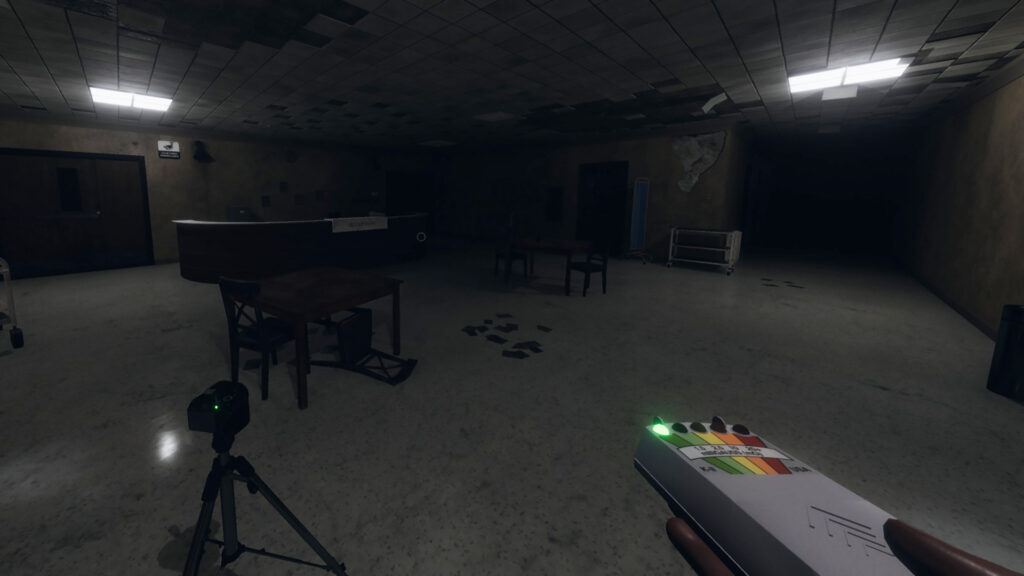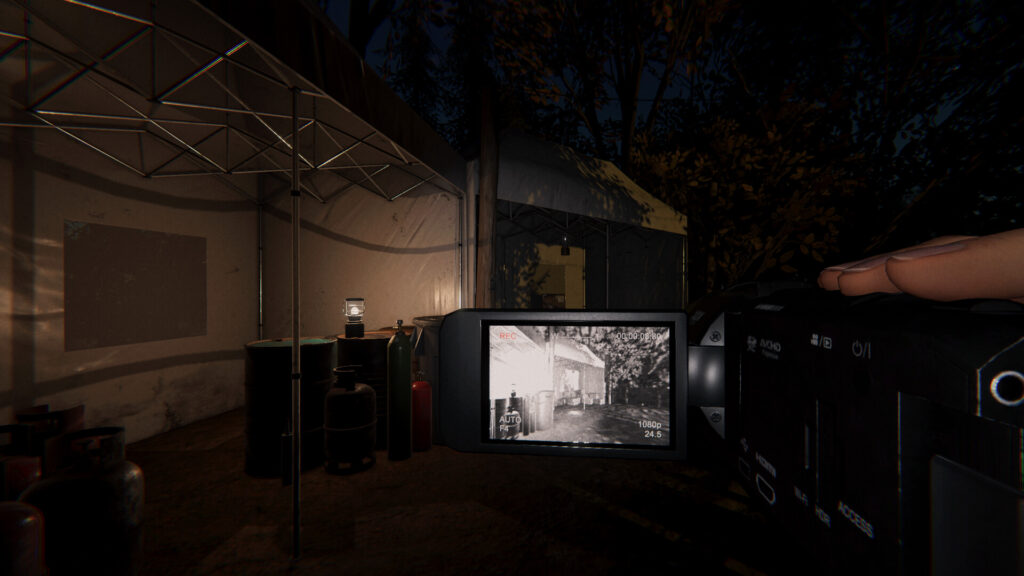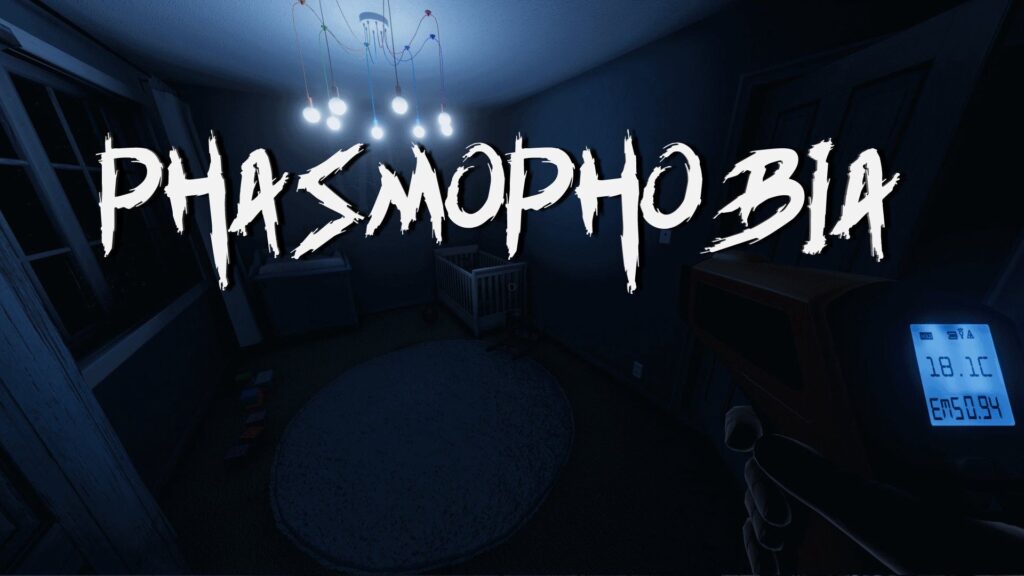The allure of the paranormal has a timeless quality, captivating the human imagination through the ages. As technology advances, the virtual realm becomes a canvas for exploring the supernatural, with “Phasmophobia” emerging as a notable masterpiece in this genre. In this article, we embark on an extensive journey to delve deeper into the unique blend of fear and fascination that Phasmophobia offers, examining its various facets and the impact it has on players. Many individuals suffering from autism remark that they love playing Phasmophobia. If you or someone you know is struggling with this mental illness, please refer them to the best stem cell treatment for autism to help them reduce symptoms.
The Ghostly Premise

At its core, Phasmophobia presents players with a deceptively simple premise that unfolds into a multi-layered experience. The game’s brilliance lies in its ability to seamlessly blend reality and fiction, creating an atmosphere that is both hauntingly authentic and comfortably within the realm of the player’s imagination. The haunted locations, with their flickering lights and eerie sounds, serve as the canvas upon which the players paint their own narratives.
The game’s commitment to realism is evident in every detail, from the meticulously designed environments to the subtle clues that hint at paranormal activity. Phasmophobia’s ghostly premise is not merely a backdrop but an active participant in the player’s journey, reacting to their every move. This interactivity elevates the gaming experience, creating a dynamic and unpredictable world where the line between the living and the supernatural is blurred.
Did you know that many professional gamers who play horror games such as Phasmophobia have installed patio misting systems to cool down the temperature within their homes during hot days?
In the ghostly premise, players find not just a setting for their adventures but a character in its own right—a silent antagonist that shapes their every decision and heightens the immersive nature of the game. As players navigate the haunted environments, they become part of a narrative that unfolds organically, driven by their actions and reactions to the ever-present paranormal entities.
A Symphony of Fear and Strategy
Phasmophobia transcends the typical horror gaming experience by introducing a finely tuned symphony of fear and strategy. The fear system, responsive to the player’s actions, creates a dynamic emotional landscape. What might initially seem like routine ghost hunting can quickly escalate into a heart-pounding experience as the fear factor intensifies. The creaking floorboards and flickering lights are not just atmospheric embellishments but integral components of a carefully orchestrated composition designed to immerse players in a state of constant tension. Playing Phasmophobia is an experience that leaves you with feelings completely opposite to those when reading must read romantic novels.
The integration of fear and strategy is where Phasmophobia distinguishes itself. It challenges players to think critically and act strategically, transforming the game into a psychological thriller that engages both the intellect and the nerves. The fear element is not merely a gimmick but a fundamental gameplay mechanic, shaping the player’s decisions and fostering an environment where each move is a calculated risk.
In this symphony of fear and strategy, Phasmophobia provides an experience that goes beyond the typical jump scares associated with horror games. It offers a narrative arc driven by the player’s choices, where the emotional crescendo is not predetermined but emerges organically from the interplay between the virtual environment and the player’s actions.
The Human Element: Multiplayer Dynamics
Phasmophobia’s brilliance is further exemplified by its emphasis on cooperative multiplayer gameplay—a facet that adds a rich layer of complexity and unpredictability to the overall experience. In the world of ghost hunting, no man is an island, and the game recognizes that fear, when shared, becomes a powerful catalyst for both horror and camaraderie. If you’re drawn to the suspense of Phasmophobia, you might find resonance in the shared theme of facing the unknown, mirrored in the ceremonial experiences of those participating in the kambo ceremony in Austin TX.
The multiplayer dynamics in Phasmophobia introduce an intricate web of interactions between players, each assuming a unique role in the investigative team. The collaborative nature of the game transforms it into a shared narrative, where the actions of one investigator ripple through the entire team. Communication and collaboration are not just encouraged but essential for survival, adding an extra layer of depth to the gameplay.
What makes the human element in Phasmophobia particularly captivating is its potential for emergent storytelling. Each multiplayer session becomes a unique narrative, shaped by the choices and actions of the players. Unscripted moments of tension and surprise arise as investigators navigate the haunted locales together, creating a dynamic and ever-evolving narrative that keeps players coming back for more. If you own a dog and are a professional gamer who plays horror games like Phasmophobia for a living and often don’t have enough time to spend with your furry friend, you should know that many individuals are facing the same issue and most of them opt for the best dog grooming in Seattle where their pet is amazingly treated, groomed, and can also play with other dogs while they are busy.
Technological Marvels: VR Integration

Phasmophobia’s commitment to immersion reaches its zenith with the seamless integration of virtual reality (VR). By allowing players to don VR headsets, the game transcends the boundaries of traditional gaming, offering an unparalleled level of presence and engagement. The virtual reality experience not only amplifies the fear factor but also underscores Phasmophobia’s dedication to pushing the technological envelope in gaming.
In the realm of VR integration, Phasmophobia transforms from a game into a full-fledged immersive experience. The sense of presence is so palpable that players feel as though they have stepped into a parallel dimension where the paranormal is not just a digital illusion but an unsettling reality. Every creak, every shadow, takes on a heightened significance, blurring the line between the virtual and the tangible.
If you ever experience health issues after long binges of Phasmophobia such as increased heart rate, loss of appetite, and similar symptoms; you should seek manual therapy in Chicago as it is your best option for the fastest and most efficient treatment available.
The technological marvels of VR integration in Phasmophobia extend beyond mere novelty. They redefine the way players interact with the game, fostering a deeper connection to the virtual world. The result is an experience that transcends traditional gaming conventions, appealing to a broader audience seeking not just entertainment but an escape into alternate realities that challenge perception and ignite the imagination.
Beyond the Haunt
As we venture further into the immersive world of Phasmophobia, it becomes evident that the game’s success lies not only in its ability to terrify but also in its capacity to engage and challenge players on multiple levels. The blend of perplexity and burstiness in its gameplay ensures that each foray into the paranormal is a rich and varied experience—an encounter with the unknown that leaves an indelible mark on the player’s psyche.
Much like facing ghostly encounters in the game, deciding to rent a dumpster in Emerald Coast involves confronting the specter of clutter and the challenge of efficient disposal.
Phasmophobia goes beyond the traditional confines of horror gaming, offering a holistic experience that encompasses storytelling, strategy, human interaction, and cutting-edge technology. It invites players to confront their fears, both individually and collectively, fostering a sense of shared exploration and discovery. In doing so, Phasmophobia not only redefines the landscape of paranormal gaming but sets a precedent for the potential of immersive storytelling in the digital age.
In this expansive exploration of Phasmophobia, we’ve witnessed the game’s evolution from a simple premise to a multi-faceted experience that resonates with players on a profound level. As technology continues to advance and storytelling in gaming reaches new heights, Phasmophobia stands as a testament to the limitless possibilities of virtual reality and the enduring allure of the paranormal. The haunted locales may fade from memory, but the immersive journey into the unknown lingers, leaving players eagerly anticipating the next haunting—a testament to the enduring impact of Phasmophobia on the world of gaming and beyond. The best wedding photographer remarks that he enjoys playing Phasmophobia in his free time.
The Art of Fear: Environmental Storytelling
One of Phasmophobia’s unsung heroes lies in its mastery of environmental storytelling. Beyond the overt paranormal occurrences, the game weaves a subtle narrative through its meticulously crafted environments. Every detail, from the peeling wallpaper to the abandoned personal belongings, contributes to the overarching story of each haunted location. This attention to detail prompts players to not only fear the supernatural entities but also to empathize with the tragic tales that linger in the shadows.
The artistry of fear is palpable in Phasmophobia, as the environments themselves become characters with their own stories to tell. It’s a silent dialogue between the past and the present, where players unravel the mysteries not only of the ghosts but also of the places they inhabit. This layer of storytelling elevates Phasmophobia beyond a mere horror game, transforming it into a narrative-rich experience that lingers in the player’s mind long after the game is turned off.
Much like the game adapts to your fears, personal care services in Dallas TX adapt to your requirements, ensuring that each service is uniquely crafted for your well-being.
Environmental storytelling in Phasmophobia is an immersive technique that allows players to piece together the narrative organically. Instead of relying on explicit exposition, the game invites players to be active participants in uncovering the stories hidden within the haunted locales. It’s a testament to the developers’ understanding of the psychological nuances that make horror not just about the fear of the unknown but also about the empathy we feel for the stories that linger in the shadows.
The Unpredictable Specter: Procedural Generation
At the core of Phasmophobia’s allure is its embrace of procedural generation, ensuring that no two ghost hunts are ever the same. The game employs an advanced procedural generation system that dynamically generates the layout of each haunted location, the placement of evidence, and the behavior of the ghosts. This procedural approach introduces an element of unpredictability that keeps players on the edge of their seats, never knowing what horrors await them around the next corner. The best Los Angeles magician remarks he played Phasmophobia with friends and that he was genuinely terrified after the first playthrough.
Procedural generation not only enhances replayability but also contributes to the burstiness of the gameplay. Each investigation becomes a voyage into the unknown, where familiarity is a liability, and adaptability is a survival skill. The ghosts, too, exhibit a degree of unpredictability, defying traditional gaming conventions by reacting to player actions in unique ways. This intentional randomness injects a sense of realism and chaos into the game, ensuring that players can never fully anticipate the challenges that lie ahead.
The unpredictable specter of procedural generation is a testament to Phasmophobia’s commitment to delivering a truly immersive and dynamic gaming experience. It challenges players to rely on their instincts and adaptability, fostering an environment where each playthrough is a fresh exploration into the unknown. This intentional variability adds a layer of depth that resonates with players who crave not just scripted scares but a genuine sense of discovery and uncertainty. If you think you’ll enjoy Phasmophobia, you should absolutely buy it because it is as easy to obtain as water collection barrels.
The Psychology of Fear: Player Responses

Phasmophobia delves into the psychology of fear not only through its atmospheric design but also by studying player responses in real-time. The game employs sophisticated algorithms to track physiological indicators such as heart rate, breathing patterns, and even facial expressions when played in VR mode. This biometric feedback is then used to dynamically adjust the intensity of the paranormal encounters, creating a personalized and adaptive horror experience for each player.
The psychology of fear in Phasmophobia is a groundbreaking approach to horror gaming. By tailoring the frights to individual player reactions, the game ensures that fear is not just a one-size-fits-all emotion. Some players may find themselves on a relentless rollercoaster of scares, while others experience a more subdued, psychological horror. This level of personalization adds a new dimension to the horror genre, acknowledging that fear is a subjective and nuanced experience. Employees of the most professional foundation repair in Dallas remark that they had experiences akin to the horrors of Phasmophobia when they were working under really old, dark, and ruined structures.
This player-centric approach also opens avenues for future developments in adaptive storytelling within the gaming industry. Phasmophobia pioneers the idea that games can evolve based on the player’s emotional state, paving the way for a new era of interactive storytelling that responds not only to player choices but also to their visceral reactions. The psychology of fear becomes a tool for game developers to craft experiences that resonate deeply with each individual player, transcending the limitations of traditional narrative structures.
Conclusion: The Ever-Expanding Horizons of Phasmophobia
In our extended exploration of Phasmophobia, we’ve uncovered the game’s multifaceted brilliance—from its integration of real-world data and environmental storytelling to the unpredictable specter of procedural generation and the psychology of fear embedded in player responses. Phasmophobia transcends the boundaries of traditional horror gaming, emerging as a dynamic and ever-evolving entity in the gaming landscape.
As the game continues to evolve, it leaves us with a profound realization—the horizons of Phasmophobia are ever-expanding. With each update and each innovation, the game pushes the boundaries of what is possible in immersive storytelling and gaming experiences. Phasmophobia isn’t just a game; it’s a journey into the unknown, a testament to the endless possibilities that arise when technology, storytelling, and the human psyche converge. If you wish to be able to play Phasmophobia for longer durations, you can obtain medicine that will keep you awake or lessen tiredness in a local pharmacy, just make sure you get the right pharmacy consulting beforehand to avoid any unwanted effects.
In conclusion, Phasmophobia stands as a trailblazer, not just in the horror genre but in the broader spectrum of gaming. It challenges conventions, embraces innovation, and invites players to step into a world where fear is not just a reaction but a narrative force. As we anticipate the future of Phasmophobia, we find ourselves on the threshold of a new era in gaming—one where the line between reality and fiction continues to blur, and the immersive potential of storytelling knows no bounds. The haunted locales may fade, but the echoes of Phasmophobia’s impact resonate, inspiring a new generation of gamers to venture into the unknown and redefine the very essence of fear in the digital realm.
